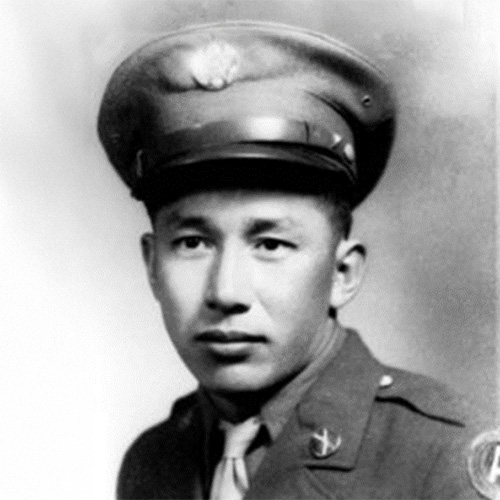Perpetuation of the Legacy
The 442nd Regimental Combat Team fought two battles in World War II: prejudice at home and the enemy in Europe. By the war’s end, the Nisei soldiers gained respect and honor as a great military unit. Our mission is to ensure that their legacy lives on.
Go For Broke!
18,000 Japanese American soldiers overcame adversity at home and enlisted in the U.S. Army to fight in a war far away. They fought with valor and honor for a country that doubted their loyalty. To this day, the combination of the 100th Infantry Battalion (Separate) and the 442nd Regimental Combat Team remains as the Army’s most highly decorated combat unit in U.S. history for its size and length of service.

21
Medal of Honor

29
Distinguished Service Cross

371
Silver Star Medal

17
Legion of Merit Medal

4000+
Bronze Star Medal

4,000+
Purple Heart

Congressional Gold Medal
For Heroic Service
In 2010 the 442nd RCT was awarded the Congressional Gold Medal, the highest civilian award given by the United States Congress. The bill to award the medal stated that “The United States remains forever indebted to the bravery, valor, and dedication to country these men faced while fighting a 2-fronted battle of discrimination at home and fascism abroad.”

Featured Soldier Story
They were attacking well-entrenched enemy positions. Moving forward was difficult as they were constantly being pinned down and fired upon with deadly accuracy…Fellow soldiers were getting killed or wounded…Hajiro, under cover, was a few yards away from him.
Suddenly, he saw Hajiro boldly stand up and, loudly shouting expletives, advance alone with his BAR spitting fire. At that moment, he realized he couldn’t let Hajiro attack alone. Therefore, he himself stood up and started attacking, shouting and yelling at the top of his voice as he fired.
Then a strange thing happened. He saw other fellow soldiers moving forward, also firing and attacking with crazed-like shouts.
Moments in 442nd History
From the first moments of the attack on Pearl Harbor to fierce battles in Italy, France, and Germany to the liberation of Dachau and the heroic rescue of the Lost Battalion; Learn the extraordinary history of the 442nd RCT.
I couldn’t sleep late that fateful Sunday morning because of the constant rumbling of thunder that would not cease. Going outside I saw the sky black with smoke punctuated by puffs of white aerial bursts. “They’re sure making this maneuver look real!” I thought. “ On the barren Italian hillside, Masayuki “Sparky” Matsunaga huddled behind a terrace wall and prayed for the dawn. He could barely move his wounded leg. But the darkness seemed to be lifting from the corpse-strewn battlefield. The wartime efforts of the Nisei soldier helped to pry open the doors to social and economic avenues that once seemed so out of reach. But not before 120,000 Japanese Americans had been imprisoned in barbed wire-enclosed camps in the barren wastelands of America.Pearl Harbor Aftermath
America’s Purple Heart Battalion
War and Internment
Latest
442sd Merchandise